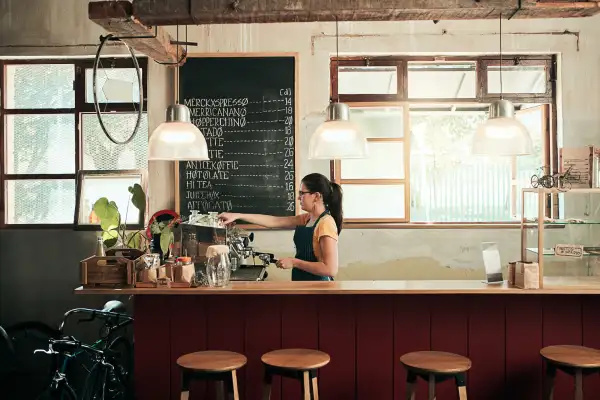Small Business Owners Can Get up to $10 Million in Loans as Part of the Coronavirus Stimulus Bill. Here's How to Apply

Last week, lawmakers agreed on the $2 trillion coronavirus stimulus package, and earmarked part of it for small businesses struggling to stay afloat as the coronavirus shuts down large swaths of the U.S. economy.
As customers (and their money) are being asked to stay home, stores are making up for missing revenue by dipping into personal savings or firing employees — not great for the unemployment rate. In response, lawmakers agreed to allot $367 billion of its $2 trillion stimulus package to small businesses.
The money would be routed through the Small Business Administration-backed Paycheck Protection Program — a $349 billion fund for loan dollars. The remaining $18 billion accounts for the $17 billion reserved to support and issue these loans and $1 billion for "grants related to small businesses & entrepreneurial development," according to the Committee for a Responsible Federal Budget.
Here’s what small businesses should know about SBA loans available through the coronavirus stimulus package.
Who Qualifies for SBA Loans
The company must be independently owned and operated, not a dominant player in the field it’s registered under, and meet the Small Business Administration’s size standard.
As a general rule of thumb, that size is 500 or fewer employees, but it might be more than that if the SBA specifies a number higher than that for the industry (see: SBA Table of Size Standards). And for businesses registered under “Food and Accommodations: (NAICS Sector 72), the maximum of 500 full-time and part-time employees applies per location.
How Much Individual Businesses Can Get
Businesses can get a loan equal to their average monthly payroll multiplied by 2.5 plus certain outstanding loans. But there is an upper limit of $10 million.
That payroll average is calculated by taking the one-year period before the date the loan is made. For seasonal employers, it’s the 12-week period starting February 15, 2019, or March 1, 2019, and ending June 30, 2019.
This is a partially forgivable loan, meaning the company won’t have to pay it back in full as long as a certain set of requirements are met.
In the first eight weeks after getting the loan, any amount that’s put towards payroll costs for annual salaries lower than $100,000, mortgage payments, rent, or utilities will be forgiven. But penalties will incur if the business lowers any salaries or the number of employees — they’ll have until June 30th to make up for any reductions.
If they do pay it in full, this is a 10-year loan with a maximum of 4% interest rates.
“Many businesses are reluctant to take on a traditional loan right now,” said NFIB’s Senior Director of Government Relations Kevin Kuhlman in an interview after the bill was approved by the Senate. “This forgivable loan is more promising, because so long as you follow the terms or the requirements, you can get this loan forgiven.
How and Where to Apply
Small business owners will be asked to head to their banks to apply for the loan.
Under the CARES Act, banks can lend directly to businesses and will then be backed by the SBA. All parties should keep in mind that any loans under the Paycheck Protection Program must be made before June 30.
"It's going to be a very simple process, where any FDIC-insured institution can underwrite the loan, approve it immediately as a government guaranteed loan, and get money to that small business," Treasury Secretary Steven Mnuchin told Fox News on March 27, just before President Trump signed the relief bill. That includes FDIC banks, credit unions, and fintech lenders, as Mnuchin told Fox in another interview on Sunday.
Mnuchin also said that he expects the program will be "up and running by April 3rd so that businesses can go to a participating SBA 7(a) lender, bank, or credit union, apply for a loan, and be approved on the same day."
Yet banks say this may be an "unrealistic deadline," as Politico reported, "because the Trump administration has failed to provide them with the necessary guidelines and set requirements for the loans that are unworkable." Lenders say that SBA loans could be delayed for weeks, or even longer, because of the overwhelming number of applications expected, as well as confusion over loan requirements and the approval process.
MORE from Money:
Coronavirus and Unemployment: Everything You Need to Know
How to Know When the Stock Market Has REALLY Hit Rock Bottom
